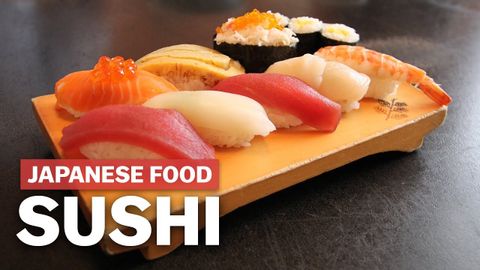【多元文化】早期的壽司是現在的三倍大?!帶你一探壽司歷史 (Sushi: How to Eat, History & Cost | japan-guide.com)
Nina 發佈於 2019 年 11 月 07 日  沒有此條件下的單字
沒有此條件下的單字US /ˈprɑsˌɛs, ˈproˌsɛs/
・
UK /prə'ses/
- v.t.用電腦處理(資料);(依照規定程序)處理;處理;流程;加工;理解
- n. (c./u.)(規定的)程序;過程;進程;方法;法律程序;進程
US /ˌrɛkəˈmɛnd/
・
UK /ˌrekə'mend/
US /ˈpɪriəd/
・
UK /ˈpɪəriəd/
- n. (c./u.)時期;(用於句末;表示斷定的口氣)就這樣;句號;月經;期間
